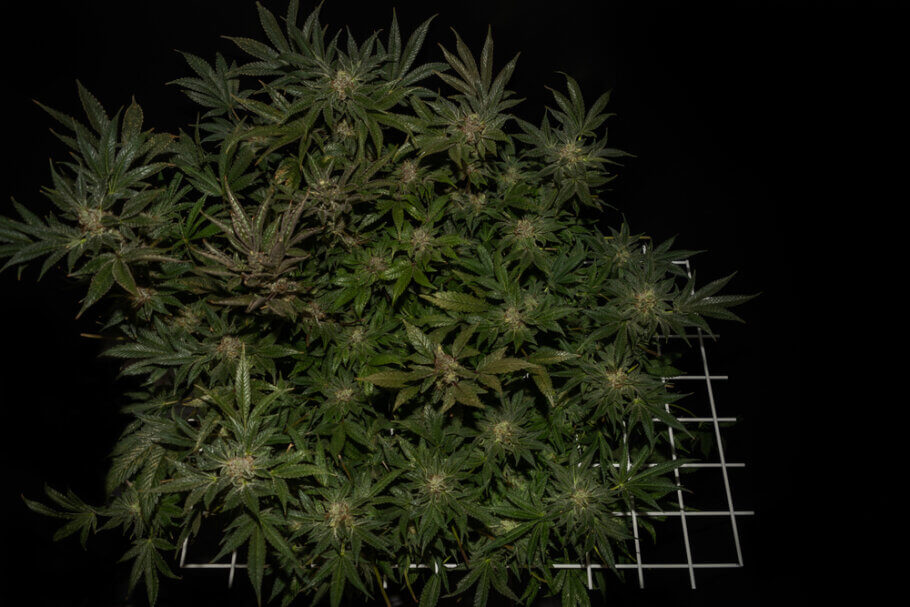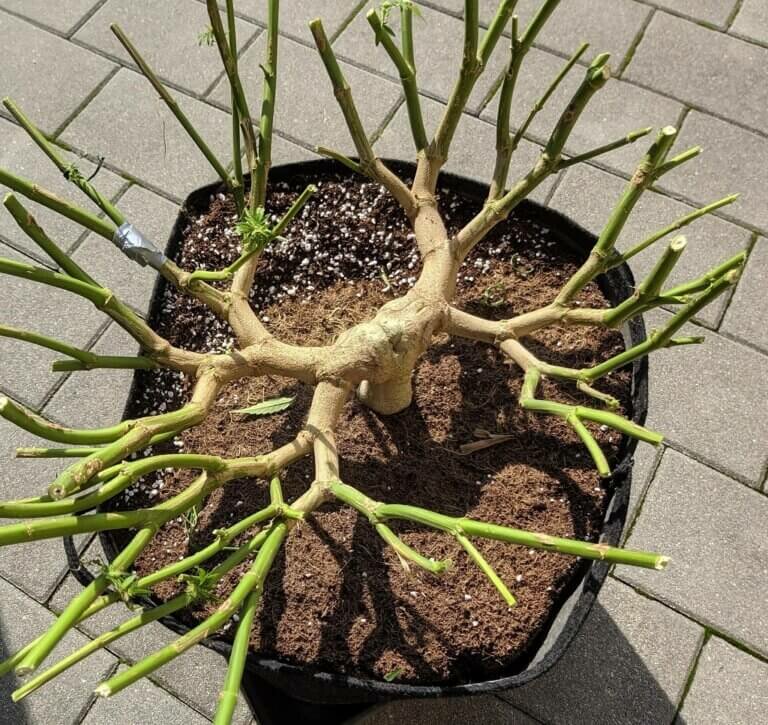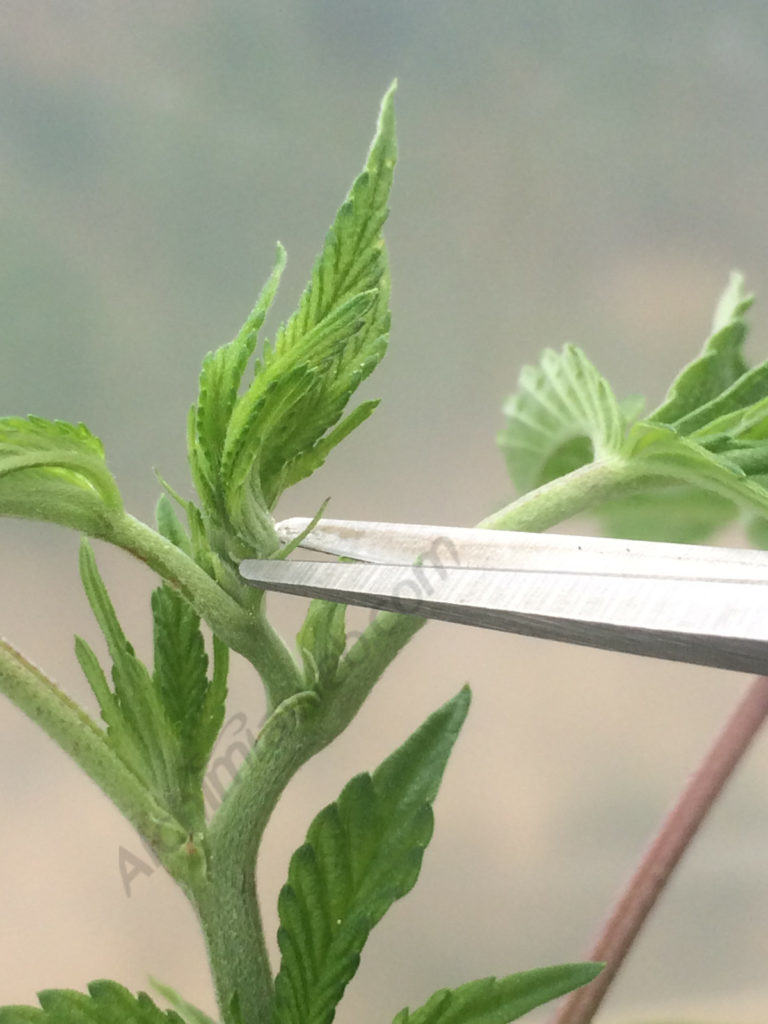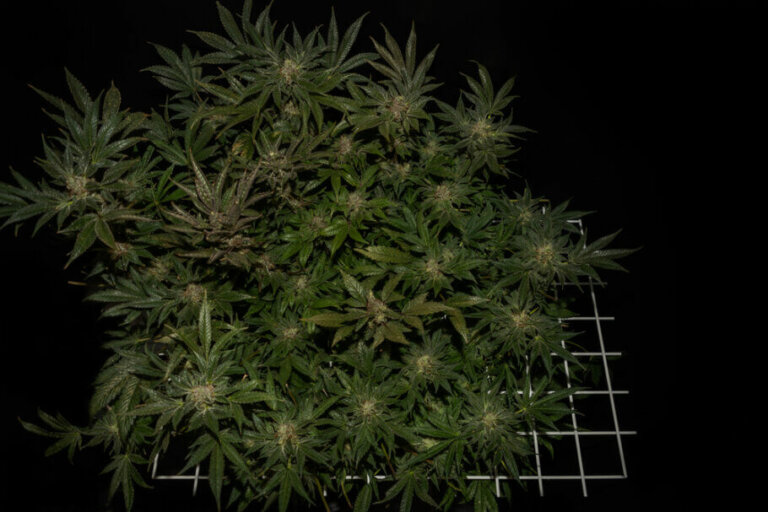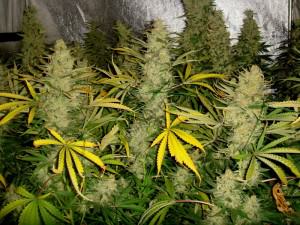Lollipopping: What it is and how to apply this technique
List of contents
Cannabis growers have been using all kinds of pruning, bending, or guiding techniques for their plants for decades with a single objective: to improve their performance by taking their installation to a higher level, with more abundant harvests and, therefore, better use of their lighting systems, fertilizers...in short, of their entire indoor setup.
Well, today we present one of these techniques, known as Lollipopping or Lollipop pruning, although we already advanced it; What is hidden under this curious name is a cultivation technique that you may have been applying to your plants for years but calling it something else...
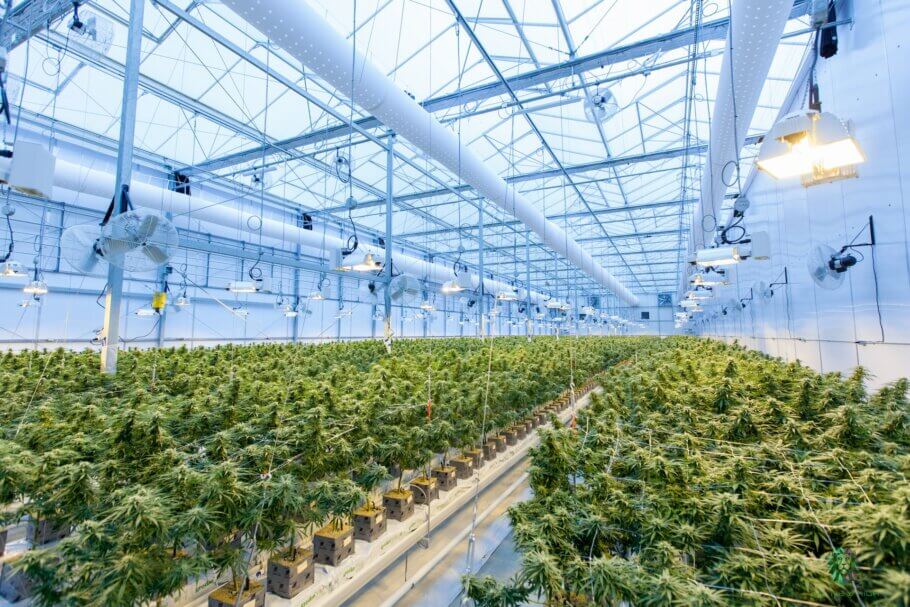
What is Lollipopping?
The name of this technique comes from the English lollipop, and it is a rather graphic way of describing the appearance of the plant once applied, with a good part of the stem without any bud or branch and topped by a huge tail of buds. And it is that, as we told you in the introduction and as you probably already suspected, Lollipopping is nothing more than the classic "lower pruning" that you probably already know or are bored to do.
Broadly speaking, it is an indoor cultivation technique in which the leaves, buds, and branches of the lower third of the plant are removed - which normally remain in the shade and without any opportunity to receive direct light from the lamp - to concentrate the energy and production of the branches in their upper part, where they do receive a large amount of light and can develop huge, compact flowers. Although in certain cases it is also applied to outdoor plants, it is not usually necessary thanks to the movement of the sun and the enormous penetrating power of its light (rather it is usually done when you know that the lower buds of your plants will end up covered in mud).
So... yes, when you have made a SCROG and you have "peeled" all the lower part of the plant that remains below the mesh, you have made Lollipopping. When you have applied the Main Lining or LST (Low Stress Training) technique and have been removing the lower shoots from the branches, you have been using Lollipopping and taking advantage of its effects on the development of the plant. Or when you have done a SOG and removed those small lower branches that you know will be shaded under the main cola leaves, you have Lollipopped too!
The SCROG cannabis growing system
The SCROG technique allows you to maximize the yield of your growroom with very few plants by using a single mesh or screen to train their branches. This growing system is specially recommended when growing vigorous strains, which can grow too much indoors and need some type of training to be grown under optimal conditions.
Why do Lollipopping?
The advantages offered by this method are several and important, especially if you take into account that the only investment it requires is some time (rather little) on the part of the grower to achieve much better results than if not using it. We present some of the virtues of the method:
- Improve yields: As you have already seen, removing the leaves and branches from the lower parts of the plants promotes greater production in the upper parts, so that the final harvest, in addition to being larger, is perfectly formed buds. Often, the flowers in these lower parts of the plants are very airy and half-developed, not very attractive, especially if we compare them with those in the tops of the branches. By applying Lollipop pruning you will achieve more yield and better flowers... almost nothing!
- Take advantage of nutrients and energy: Indeed, when the nutrients you provide to your plants are destined for the areas where you really want the buds to form, you are on the right track. Plants distribute nutrients throughout their parts, so if there is less plant mass in the plant, the areas that remain will receive that extra dose of energy that will make a difference during flowering. Simply, you get the plant to allocate its resources to the areas that interest you, with the improvement in production and quality that this entails.
- Improve aeration: Regardless of other benefits it may bring, pruning the lower areas of the plants is a habit of many growers as it is often commented that it greatly favors the aeration of the crop, improving the airflow around the plants and helping that moisture does not accumulate in these areas, which can cause fungal problems.
- Eliminate chances of pests: Many problems, especially pests, begin in the lower areas of the plants, so pruning these areas greatly reduces the chances of these dreaded visitors appearing in your garden. In addition, by having this area free of leaves and branches you will be able to detect and treat any problem more quickly.
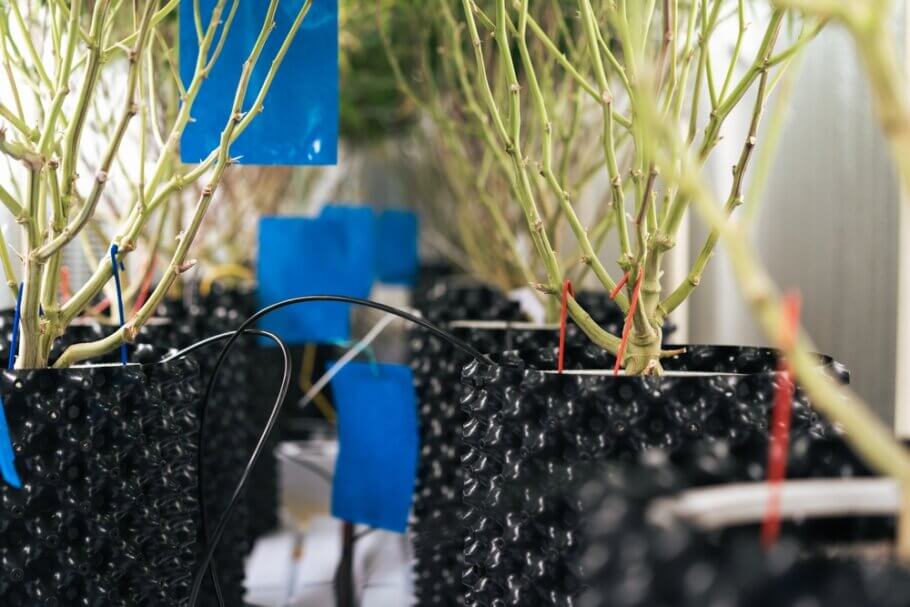
Honestly, and unless yours is one of the cases that we will mention below, we always recommend this type of pruning, since the advantages it offers far outweigh the disadvantages. It is easy to do, requires little time, improves the production and final quality of your flowers, and reduces the appearance of potential problems such as pests...why wouldn't you do it? Well, we give you a few cases in which you should not apply this technique:
- Normally, unless it is a large auto-flowering variety that you know well and know may need it, this technique is not used with automatic seeds.
- As we have mentioned, and except on rare occasions, it is not usually used in outdoor crops, where the movement of the sun and its enormous penetrating power make it almost useless. If you have fungal problems in your area, it can help reduce their impact, although it is always better to prevent them with a good fungicide.
On the other hand, there are cases in which the application of Lollipop pruning is practically mandatory if you really want to obtain the best possible results, such as the following:
- If you grow in SCROG or are familiar with this method, you will know that it is recommended to prune all the branches, leaves, and shoots of the part that remain below the mesh, so that production is concentrated in the apical area, where it is important for large buds.
- Another case in which it can help you improve production is if you use a growing lamp with low light penetration. If you are tired of seeing how the flowers at the bottom of your plants barely develop and cause more work than joy, don't hesitate and prune them!
- There are techniques such as Main Lining where, to achieve the desired results, branches and buds must be removed from certain parts of the branches, something very similar to what is done with Lollipop pruning.

When to do Lollipopping?
With time and experience, you will see that this type of pruning is very useful in a large number of cases, and on certain occasions, you may even end up using it with mother plants. However, it is normally done when the plants enter the bloom stage or a week before flowering, so that during the stretch that occurs during the pre-flowering phase (first two weeks with flowering photoperiod) the plant already takes advantage of that best distribution of energy in the apical areas.
However, it is quite likely that you will have to repeat the operation after a few days or weeks, since even while in the flowering photoperiod the plant will tend to develop new shoots and leaves in the previously pruned areas. In extreme cases, such as plants with a powerful stretch and that need some extra time to begin the flowering stage itself, you may have to prune several times before seeing how the buds - finally - begin to form.
How to do Lollipopping?
By now, you will have an idea of how and when this pruning should be done, although we want to give you some final tips. Although it is not a technique that can damage or stress the plants excessively, any type of pruning causes a little stress on them and there is always a minimal possibility of disease transmission. For this reason, we recommend using pruning shears such as Alchimia Bud Clean, well disinfected with isopropyl alcohol.
If you do it by hand, without using scissors or pruners, disinfect your hands before starting to ensure maximum hygiene... it costs nothing to do it and you can save yourself big problems if one of your plants is infected by a virus, for example.
As always, don't hesitate to leave us your questions or comments in the messages section, or share some of your tricks if you already have experience with this technique.
Happy harvest!

















































